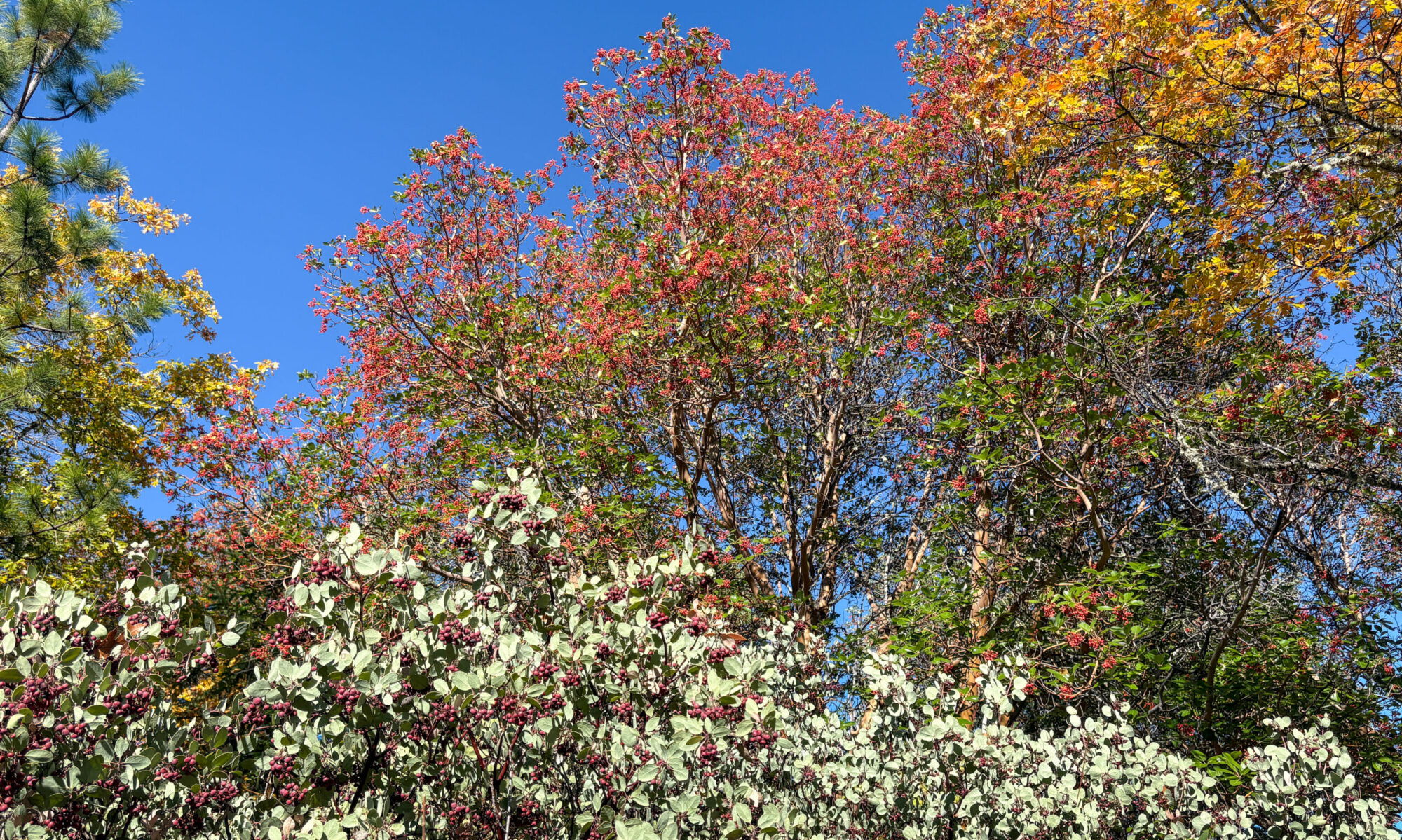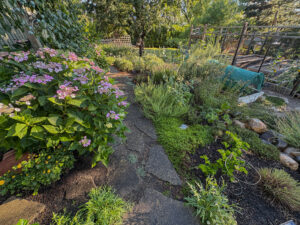 This summer has been gorgeous—we’re well into July and have enjoyed fresh, blue skies and temps in the mid 90’s. We’re sleeping under the stars on our platform, and the garden is flourishing; figs, blackberries, and zucchini are producing near-daily treats and our squash show promise to produce well into the fall. Tomatillo lanterns have begun to hang and, with the chilis in the east bed, this should be a banner year for salsa production. As expected, a couple gallons of Glenora grape juice will be squeezed in a few weeks. We’ve even eaten our first tomatoes with many more soon to ripen. With all that entertainment, how could one even think of leaving this beautiful yard and its colorful sunflowers—but we did.
This summer has been gorgeous—we’re well into July and have enjoyed fresh, blue skies and temps in the mid 90’s. We’re sleeping under the stars on our platform, and the garden is flourishing; figs, blackberries, and zucchini are producing near-daily treats and our squash show promise to produce well into the fall. Tomatillo lanterns have begun to hang and, with the chilis in the east bed, this should be a banner year for salsa production. As expected, a couple gallons of Glenora grape juice will be squeezed in a few weeks. We’ve even eaten our first tomatoes with many more soon to ripen. With all that entertainment, how could one even think of leaving this beautiful yard and its colorful sunflowers—but we did.

With friends Bob & Bev visiting from Gresham, we drove the 20 miles to join the Heyermans and Karlins at Hyatt for 4-nights of kayaking, birding, hiking, and singing up at Wild Cat Campground. We really enjoy launching our kayaks on the glassy morning water, and have had good wildlife sightings from our boats. The winds pick up late morning so we head for camp and busy ourselves until it’s time to gather up the band and work through our favorites.
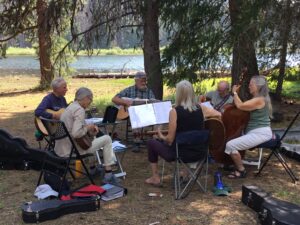
This stay at Hyatt Lake (actually a reservoir) saw the water level somewhat reduced from an earlier visit several weeks earlier. But not so much as to affect the pleasure of sitting lakeside and being refreshed by the afternoon breeze blowing off of it. On our final day we discovered a new hike for us to Wild Cat Hill located between Hyatt and Howard Prairie Lakes and a 400′ scamper off the Pacific Crest Trail that passes nearby.

We began after breakfast and were well-prepared for the 6-mile round trip. Thankfully, hiking the Pacific Crest Trail is pretty easy in our section and much of our trek was in the shade of massive fir trees. We later were surprised to enter an Oak forest without its companion, poison oak. We like to think that’s because the menace doesn’t grow above 4000′ but we may have just been lucky. We started from our camp in Wild Cat and when we arrived at the entrance road to the campground, our route had us walking north (as opposed to returning to Loops A & B of the Hyatt Lake campground). We’ve ridden our bikes around Hyatt numerous times and knew this route would eventually be blocked by a gate bordering some private property, but that didn’t come into play. Shortly after leaving the entry to Wild Cat, there’s a forest road heading away from the lake to the east, and it was there we accessed the PCT that intersects shortly after another gate a hundred yards or so up the road.
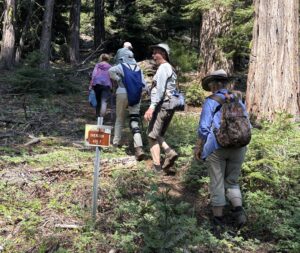
Once on the PCT, everything changed; no more asphalt, no more gates, simply joyful walking along a well-worn path with occasional pauses to enjoy the birdsongs. It’s not unusual to encounter through-hikers on their way to Canada (very few hike the other way due to unpredictable autumn weather characteristic of California’s Sierra Nevada Mountains). The sun was beginning to penetrate our canopy and this was no time for serious hikers to linger; they often set off on their day’s hike well before sunrise to beat the heat. After just about 3 miles, a sign identifies the final 400′ scramble to a summit that offers beautiful panoramas of both Hyatt and Howard Prairie Lakes.
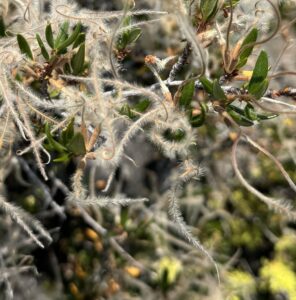
We settled down in some shade and ate snacks and took selfies. I wandered a bit further on a thoughtful rock-lined trail for another view to the east, and saw a Mountain Mahogany shrub resplendent with seeds. That was new to me, and very interesting.
The walk back was a gentle slope and we enjoyed seeing things in a slightly different light. There’s really nothing difficult about this hike; as for its length, I often walk 6+ miles each time I play 18 holes of golf (assuming I keep ’em in the fairway). As much as I love the game, it’s no comparison to trekking in the woods. Furthermore, it’s readily accessible for a lovely day-hike (barely 20 miles from Ashland and a shady parking spot is labeled on the map). And there’s always lunch and a cold beverage at the Greensprings Inn should you wish to support a local.
Map source: Pacific Crest Trail Association
